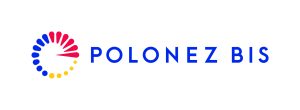Metafora i Semiotyka w (Inter)Akcji
Polonez Bis, 021/43/P/HS2/02729
Kierownik projektu: dr Michael Pleyer
pleyer@umk.pl
How do people communicate with each other when they do not share a common language or are not allowed to use language to communicate? Many people know situations like this, for example, when they are in a different country, and they need to communicate with somebody who uses a different language. This has also been tested in laboratory experiments. For example, researchers had people play communication games where participants were asked to get others to select a particular picture, but they weren’t allowed to use language. Instead, they could only use abstract ‘symbols,’ drawings, or gestures. For communication games like this, participants therefore have to come up with a new way in order to communicate with each other. And as these experiments have shown, participants quickly develop their own communication system with new ‘words.’
However, many words do not only mean one thing, but they can actually refer to several different things. For example, we can say that it is ‘sunny’ outside, but we can also say that somebody ‘has a sunny personality.’ In the first case, sunny has a literal meaning – it literally means that the sun is shining – in the second case it has a metaphorical meaning – the person we are talking about shares some qualities with the sun: being bright and warm, for example. In fact, language is full of metaphors like this. The goal of this project is to find out how people develop these metaphorical meanings.
In order to do so, in this project people will play communication games with each other where they are not allowed to use language. Instead, they have to communicate using abstract ‘symbols.’ As they did in many other experiments, they will quickly come up with meanings for these symbols. For example, if one participant wants the other to pick a picture of somebody who sees something, they might select the symbol a. After a while, the other participant will understand that a means ‘seeing’. But what happens if participants in the experiment then have to communicate about new meanings using their new communication system? Will they extend the meanings of these symbols in ways similar to what we see in language? So, for example, if they want the other participants to pick a picture of somebody who knows something, will they again pick the symbol a because its meaning is the one that comes closest to what they want to say, as in the English expression ‘I see what you mean’ (= I know what you mean). In other words, do participants in communication games make use of metaphorical meaning extension? Do they use the same symbol for different, but related meanings, the same way they do in language?
The answer to this question will be able to tell us a lot not only about what language is like, but also about where language came from and how it developed. A lot of previous research has shown that metaphor is important in language and communication. It has also been shown to influence how languages change. Many words first had one meaning, such as ‘sunny’ just referring to the sun. But then, they gained another meaning, such as in ‘a sunny personality.’ Researchers have also argued that this is how language evolved and became a complex communication system. By understanding the role of metaphor in leading to the development of new meanings, we can therefore also gain insights into how language might have evolved in the first place.
The main goal of this project is to find out how metaphor works in communication and how people use it when trying to communicate meanings to each other. This will be done in two ways: a) by looking at historical texts to find out how people used metaphors in the past to develop new meanings – something called a corpus analysis, and b) by performing experiments where people have to play communication games with each other.
In the first set of experiments, participants will first have to create a new communication system and will then need to communicate about new meanings. This will show if people spontaneously make use of metaphor in situations like this.
But metaphor can not only be found in language. If we say ‘prices go up’ we might point upwards at the same time, although literally speaking, nothing goes up when prices increase. The upwards movement again is metaphorical. To test out this ‘multimodal’ dimension (not only including the vocal modality, but also the gestural and visual domain, in another set of experiments, people will be asked to communicate metaphorical meanings just by using their body, but not their voice – pantomime. Will participants also use metaphor when communicating via pantomime, for example when having to communicate meanings like ‘she exploded with anger’ or ‘he is out of his mind’?
By answering these questions through a number of experiments, the project will be able to shed light on metaphor not only regarding its role in language and communication, but also in language change and language evolution.


This research is part of the project No 021/43/P/HS2/02729 co-funded by the National Science Centre and the European Union’s Horizon 2020 research and innovation programme under the Marie Skłodowska-Curie grant agreement No 945339.
Grant realizowany jest na Uniwersytecie Mikołaja Kopernika w Toruniu.

 Fosa Staromiejska 3, 87-100 Toruń
Fosa Staromiejska 3, 87-100 Toruń